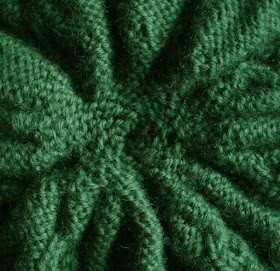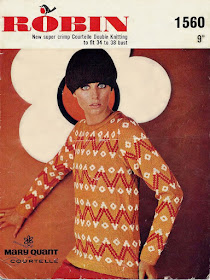I have been admiring two of the plastic woolholders. One is a Beehive woolholder - judging by eBay, these were made in large numbers and are still quite common.
 |
| Beehive woolholder |
The beehive was the symbol of Patons & Baldwins (and originally the trademark of Baldwins, before the two companies merged). The link is acknowledged by a message inside the base of the woolholder: "The design of this Beehive woolholder has been approved by Patons & Baldwins, makers of Beehive wools, and is marketed with their consent." Also inside the base are two registered design numbers, 856057 and 856077, which show that the design was registered in 1948. (That doesn't of course mean that they were all made then.)
A beehive is a good shape for a woolholder - it feels good, too. There is plastic strap to hang it by, and the other hole in the top is for the wool to emerge through. The base is removable (and has a handy needle gauge in it, too).
The other woolholder is also some sort of plastic, probably older, possibly bakelite. It has one hole in the top and two in the bottom, so I'm not quite sure how it was intended to be used. The strap may have been replaced - it is a length of tape, with a button on either end to stop it slipping through the hole, so it looks a bit home-made.
 |
| Mottled plastic spherical woolholder |
If the strap is in the original location, the wool emerges from a hole in the base, if the base is the end that says "British Ware" and gives the N.B. monogram of the manufacturer (the same as the beehive woolholder). It doesn't seem as successful a design as the beehive - you really have to hang it on your wrist or belt, whereas the beehive could stand on a table if you wanted.
Looking at these woolholders inspired me to want to try one, so I have bought one on eBay. It is probably much later than the two from Lee Mills, and is made of a softer plastic. But functionally it is very similar to the beehive - it has a plastic strap at the top, and a hole at the top for the wool to emerge. As soon as a suitable opportunity arises, I'll try it out and report on how well it works.





















